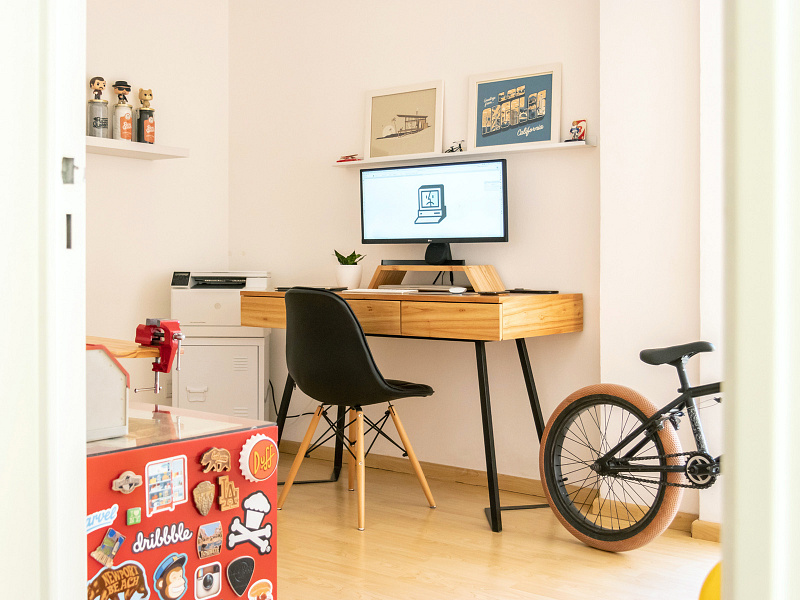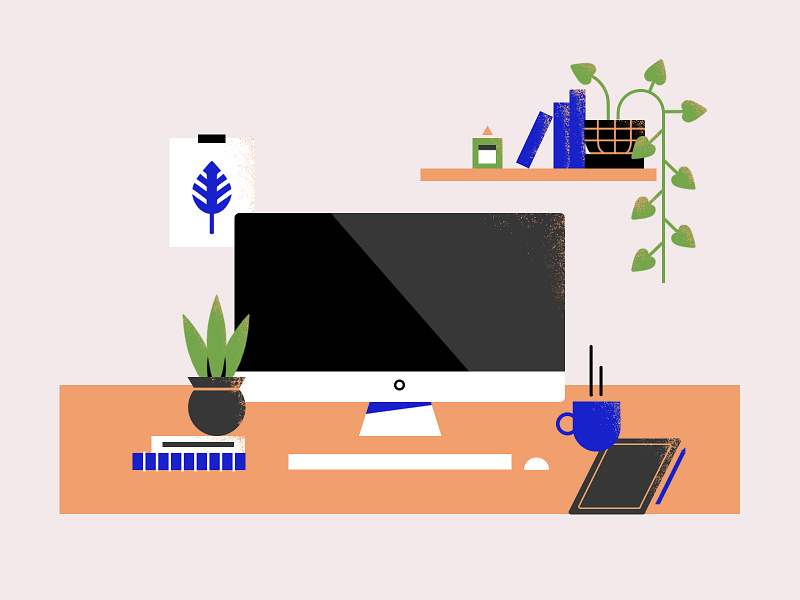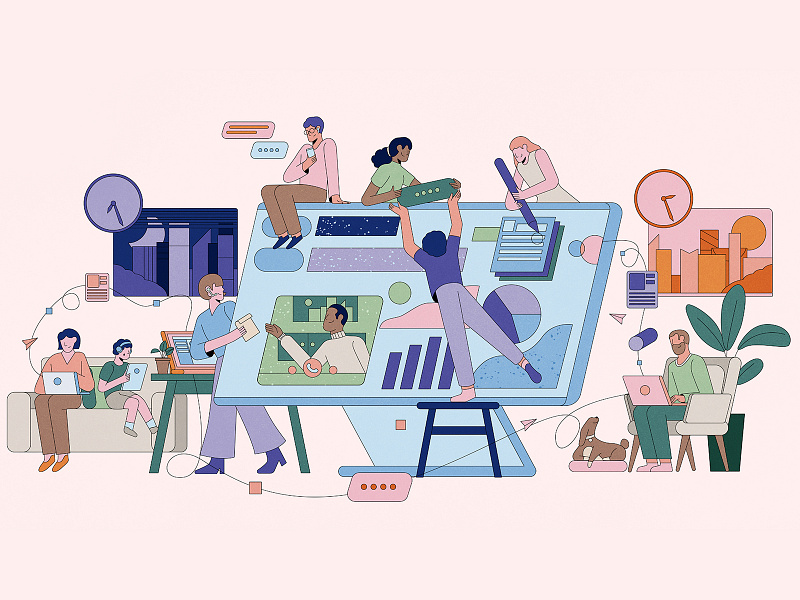Guest author Nahla Davies shares some tips and best practices for optimizing your home workspace so you set yourself up for success in 2021.
One of the challenges of setting up a remote home office is it forces us to consider things that we may otherwise take for granted when working at a normal office building, such as ensuring security to keep our personal data secure or running routine business processes ourselves.
Fortunately, people have a lot of room to work with in a remote office, both figuratively and literally. There’s a lot more you can do to adjust your work environment at home than in a traditional office building, but keep in mind it also takes more than rearranging decor to achieve the most creative success possible at home.
Luckily, so much time at home has given distributed teams time to consider what works best for them to ensure their days are more efficient. Pair this with the fact that people on average are likely to be more productive when they have the flexibility to work from home, and it’s easy to see why the future seems bright for the remote workforce at large.
Let’s take a look at some of the best ways to set yourself up for creative success when working from home.
Have an eye for ergonomics
Now that remote work is becoming increasingly normal , employees and freelancers should give a careful pair of eyes to their working space and the way it benefits their productivity. The best way to start is by carefully separating the office space from the rest of the living space.
The ergonomic considerations of your home office should begin with location. It’s important to cut out distractions that are more likely to happen based on where you are in relation to everything else. Equally important are the dimensions that should accommodate the many devices you need to store for long periods of time to get your creative work done.
Make sure to round out the rest of your workspace with the right equipment, the most important of which is a deck chair or something similar. Choosing between light sources like natural or ambient lighting is also crucial to keeping you productive through a whole workday from the comfort of your own home.
Ultimately, all the parts of your workspace should complement each other, so that you spend less time worrying about how your layout looks and feels and more time on your work.
Keep your online data secure
Sensitive activities like personal accounting and managing finances call for commensurate security measures to handle sensitive data safely. If you’re working from home for another business especially, you face the likely prospect of having to store not only your own data but the company’s data as well. Since 92% of organizations now store their data online, this is not an uncommon occurrence that home-based workers face.
Let’s face it, it’s more important than ever for us to keep a massive amount of digital assets safely stored online than it ever has been before. To ensure security, you need to take a few more regular precautions, and you may need to take these precautions without your boss or manager telling you to take them.
One of the most important precautions to take is to always use virtual private networks (VPNs) when you transmit personal and business data online. VPNs exist at the crossroads between affordability and security, and you can get quality VPNs such as Surfshark or NordVPN for under $5 a month that come with proven 256-bit AES or IPSec/IKev2 encryption protocols.
A single VPN can also help shield the IP addresses of multiple devices you likely use for your work, so that cybercriminals have little chance of accessing your streams of data no matter where they’re coming from.
Another safeguard you can use that is quickly gaining attention is two-factor authentication. It’s easy to get comfortable with a simple firewall for your operating system and a (likely expired) free version of anti-malware software.
Instead of growing complacent with your security measures for your home network, you can adopt multifactor authentication to guard you against malicious online entities. The process of multifactor authentication will make it next to impossible for actual hackers to get ahold of your data unless they have all your devices in their hands.
Automate your business processes
Working from home means you may need to take over responsibility for several routine business processes such as accounting and bookkeeping, taxes, organizing documents, order entries, sending emails, or monitoring event logs. These can be time-consuming and sometimes confusing tasks to tackle, especially when there’s higher-priority work to be done.
One of the best solutions is to invest in secure and reliable tools that can help you to automate as many processes as possible so you can still meet important deadlines. For example, to set yourself up for bookkeeping and accounting success, you should use software that enables you to take control of your expenses by coming with essential features such as standard PC1 DSS certification, invoicing reminders, bulk transaction updates, and the ability to customize your expense and income categories.
When it comes to organizing and storing documents, you’ll want software that comes with audit trails, can store files in the cloud, allows you to scan and store paper documents, and has an intuitive design for quick ease-of-use.
You get the idea. Think about any routine but time-consuming processes that could easily be automated , and then invest in the right tools to automate each respective task.
Final thoughts
As you probably already knew before reading this article, there are numerous factors that go into making sure your home office is truly conducive to productivity. It’s important to give an extra level of attention to detail to prevent distractions and ensure all the right tools for the job are organized in one place.
With such a large digital footprint that comes with working from home, it’s especially difficult for workers to keep their sensitive assets secure and accounted for. Of course, the only way to truly figure out what kind of layout works for you is with time. Be patient with yourself and remember to embrace the freedom a home office setup offers. ■
About the Author: Nahla Davies is from Brooklyn, New York. Since 2015, she has worked with enterprise clients around the world developing RegTech protocols and best practices. She shares her insights at nahlawrites.com. Follow Nahla on LinkedIn.
Find more Process stories on our blog Courtside. Have a suggestion? Contact stories@dribbble.com.












